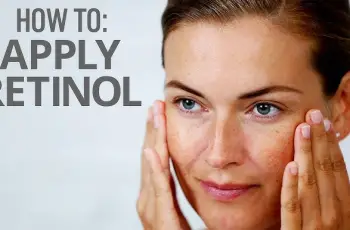
7 Causes of White Bumps on Your Skin and What to Do About Them
Tiny white bumps on the skin may seem harmless, but figuring out what causes them and which type you have can be confusing. To help, we spoke with two dermatologists about the different causes of white bumps and how to deal with them. Read on for their tips on how to identify white bumps and how to handle them.
01
of 07
Milia
King explains, “Milia are tiny cysts under the skin, and they appear as tiny smooth white bumps.” While they tend to be on the eyes or forehead, she says they can occur anywhere on your face, neck, or chest. Milia can form naturally or be the product of comedogenic products.
De Rosa tells us that they “tend to go away on their own or with gentle exfoliation or a topical retinoid,” but that “if this doesn’t work, the milia can be unroofed with a scalpel blade or needle and then expressed by a professional.” King notes that “topical retinoids and hydroxy acids may also help to prevent and speed the resolution of milia.”
02
of 07
Cysts
“A cyst is a small sac within tissue usually filled with fluid or pus,” says De Rosa. King adds that ” the two kinds of cysts we encounter most frequently are acne cysts and epidermal inclusion cysts (sometimes referred to as sebaceous cysts)” and says that acne cysts aren’t cysts, technically, because they have no wall around them.
Cysts can be caused by skin irritation or occur on their own without cause. King says, “Epidermal inclusion cysts can occur anywhere on the body and consist of a wall made of a layer similar to the skin on the outside of the body, and old skin cells and sebum and keratinous debris accumulate in the middle.” Surgery is the answer: “The sac (lining) of the cyst must be removed, so surgical excision of the cyst is the best way to get rid of a cyst, especially if it becomes inflamed or infected,” says De Rosa.
03
of 07
Clogged Pores
When your pores are blocked from emptying, they’re clogged. De Rosa explains that “they occur when dead skin cells and oils get stuck inside the pore, and this can cause whiteheads, blackheads, or pimples.”
According to King, clogged pores “result from hormones and genetic factors,” and “using comedogenic products on your skin can worsen these.” To help, our dermatologists suggest using salicylic acid and benzoyl peroxide products, over-the-counter or prescription topical retinoids, or a blackhead extractor.
10 Ingredients to Avoid If You Have Acne, According to Derms
04
of 07
Eczema
Also known as atopic dermatitis, King says eczema is “the most common chronic inflammatory skin disease characterized by skin barrier disruption.” De Rosa says you “may also have a rash or thickening of the skin along with oozing and crusting in addition to cracked, dry skin.”
“Treatment often involves reducing triggers for flare-ups,” De Rosa explains. “It is not uncommon for eczema to be stress related (or exacerbated), so try to avoid stressors or find a constructive way to deal with it.” She also suggests steroid creams or light therapy, and King adds that “there are systemic immunomodulators that can be helpful for more severe cases.”
05
of 07
Vitiligo
Characterized by skin pigment loss, De Rosa says that “vitiligo is an autoimmune disease in which your immune system attacks the cells that create pigment.” She explains that “although it has a genetic basis, there are some known triggers for vitiligo, including sunburns and deep chemical peels (such as a phenol peel).”
King says that “we do not have a cure for vitiligo, but vitiligo treatments include topical corticosteroids, topical calcineurin inhibitors, and phototherapy” and that “a new topical JAK inhibitor named Opzelura was FDA approved for the treatment of vitiligo in June 2022.” According to De Rosa, other treatments include skin grafting and camouflaging makeup.
06
of 07
Idiopathic Guttate Hypomelanosis (IGH)
Caused by overexposure to UV rays, aging, or genetic factors, King says IGH “presents as small, flat white or light spots on sun-exposed areas of skin, usually multiple.1
To deal with them, De Rosa recommends that you “limit sun exposure by covering up and wearing broad-spectrum sunscreen SPF 30 or above.” Additionally, she says that “topical corticosteroids, topical retinoids, lasers, and dermabrasion may help to decrease their appearance cosmetically.”
07
of 07
Tinea Versicolor
De Rosa tells us that tinea versicolor is a fungal skin infection caused by the overgrowth of yeast called Malassezia furfur. “Tinea versicolor sometimes causes itchy areas of discolored skin in various colors (brown, red, white, pink, or yellow).” King also explains that it “can cause a rash with a fine scale and light or dark discolorations of the skin primarily on the shoulders, chest, and back.”
To prevent it, King suggests shampooing regularly with Selsun Blue (or other shampoo containing selenium sulfide) and letting the lather run over your shoulders, chest, and back. “Selenium sulfide kills the yeast that causes this problem,” she explains.
De Rosa says that once you have tinea versicolor, “treatment includes oral or topical antifungal medication and avoiding triggers such as humidity, excessive heat, and sweating.” However, just because it’s gone doesn’t mean it will stay away, and King notes it often recurs, especially if you reside somewhere humid or warm.
There are various causes of white bumps on your skin, ranging from clogged pores to an overgrowth of fungus. Some spots are caused by genetics or your immune system, while others occur naturally or result from sun damage. If you are contending with bumps, your best bet is to see your board-certified dermatologist, who can help you identify the cause of your concern and how to treat it.


